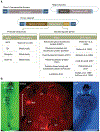Mosquito Transposon-Mediated Transgenesis
- PMID: 37816607
- PMCID: PMC11025883
- DOI: 10.1101/pdb.top107687
Mosquito Transposon-Mediated Transgenesis
Abstract
Transposon-mediated transgenesis of mosquito vectors of disease pathogens followed the early success of transgenesis in the vinegar fly, Drosophila melanogaster The P transposable element used in Drosophila does not function canonically in mosquitoes, and repeatable, routine transgenesis in mosquitoes was not accomplished until new transposable elements were discovered and validated. A number of distinct transposons were subsequently identified that mediate the introduction of exogenous DNA in a stable and heritable manner in mosquito species, including members of the genera Aedes, Anopheles, and Culex The most versatile element, piggyBac, is functional in all of these mosquito genera, as well as in many other insects in diverse orders, and has been used extensively outside the class. Transposon-mediated transgenesis of recessive and dominant marker genes and reporter systems has been used to define functional fragments of gene control sequences, introduce exogenous DNA encoding products beneficial to medical interests, and act as "enhancer traps" to identify endogenous genes with specific expression characteristics.
© 2024 Cold Spring Harbor Laboratory Press.
Figures

References
-
- Adelman ZN, Jasinskiene N, Vally KJ, Peek C, Travanty EA, Olson KE, Brown SE, Stephens JL, Knudson DL, Coates CJ, et al. 2004. Formation and loss of large, unstable tandem arrays of the piggyBac transposable element in the yellow fever mosquito, Aedes aegypti. Transgenic Res 5: 411–425. doi:10.1007/s11248-004-6067-2 - DOI - PubMed
MeSH terms
Substances
Grants and funding
LinkOut - more resources
Full Text Sources
Medical
